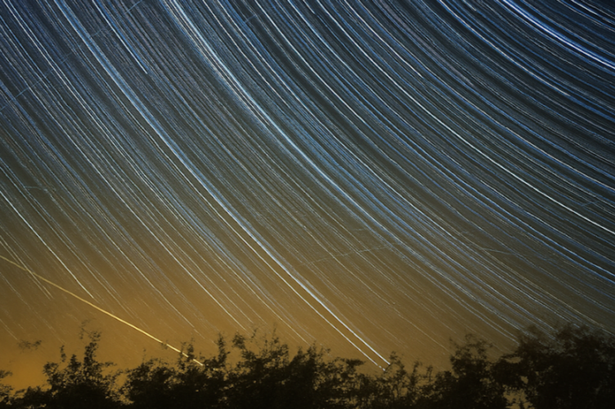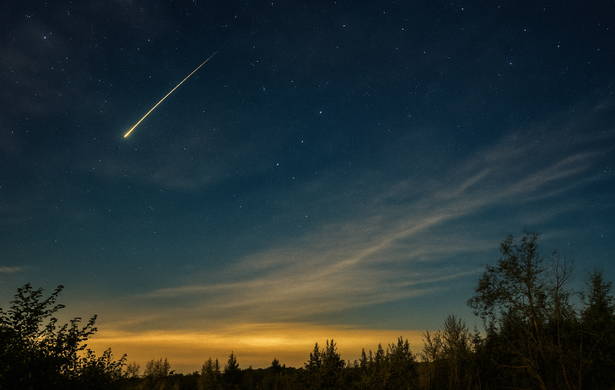Spectacular images of the Perseid meteor shower over Wales have been caught
21:49, 12 Aug 2025Updated 21:49, 12 Aug 2025
 Perseid meteor streaks across the night sky above Magor and Undy in Wales(Image: Jonathan Myers)
Perseid meteor streaks across the night sky above Magor and Undy in Wales(Image: Jonathan Myers)
Stargazers in Wales were treated to a dazzling display on Monday night as the Perseid meteor shower lit up the skies. Our photographer Jonathan Myers captured striking images of the meteors streaking across the sky over Magor and Undy in Monmouthshire, revealing the bright flashes of light caused by tiny space particles burning up in Earth’s atmosphere.
The Perseids is one of the most famous and reliable meteor showers of the year and occurs when our planet passes through a trail of debris left by Comet 109P/Swift-Tuttle.
As Earth moves through this cosmic dust cloud the particles, which are no bigger than a grain of sand, collide with our atmosphere at around 36 miles per second, producing the spectacular streaks we see as shooting stars.
In 2025 the Perseids are active between July 17 and August 24 with the peak falling on the nights of August 11-12 and August 12-13.
From superstar gigs to cosy pubs, find out What’s On in Wales by signing up to our newsletter here
 The Perseid meteor shower lit up the Welsh skies on Monday, August 11 (Image: Jonathan Myers)
The Perseid meteor shower lit up the Welsh skies on Monday, August 11 (Image: Jonathan Myers)
During the peak the Perseids can produce up to 100 meteors per hour under ideal conditions, according to the National Space Centre.
This makes it one of the best opportunities of the year for spotting multiple shooting stars in a short period.
Light pollution remains the biggest obstacle for would-be meteor watchers. Urban streetlights and building illumination can wash out all but the brightest meteors so experts recommend heading to the countryside or a designated dark-sky reserve.
 The meteor shower happens when tiny particles hit Earth’s atmosphere at high speed, creating bright streaks of light in the sky(Image: Jonathan Myers)
The meteor shower happens when tiny particles hit Earth’s atmosphere at high speed, creating bright streaks of light in the sky(Image: Jonathan Myers)
The best way to view the shower is to find an open spot with a clear view of the horizon, lie back, and look up at the darkest part of the sky.
Allow at least 20 minutes for your eyes to adjust to the darkness and leave the phone in your pocket to avoid ruining your night vision.
Patience is also key as meteors can come in bursts followed by quieter periods so warm clothing and a flask of tea or coffee might be a must for you if you’re heading out there.
There’s still time to catch the Perseids before they fade as activity will remain noticeable until August 24 although rates will drop steadily after midweek.
